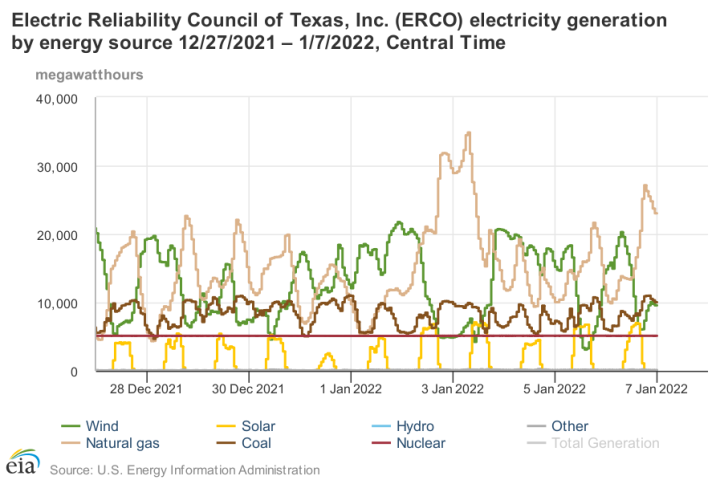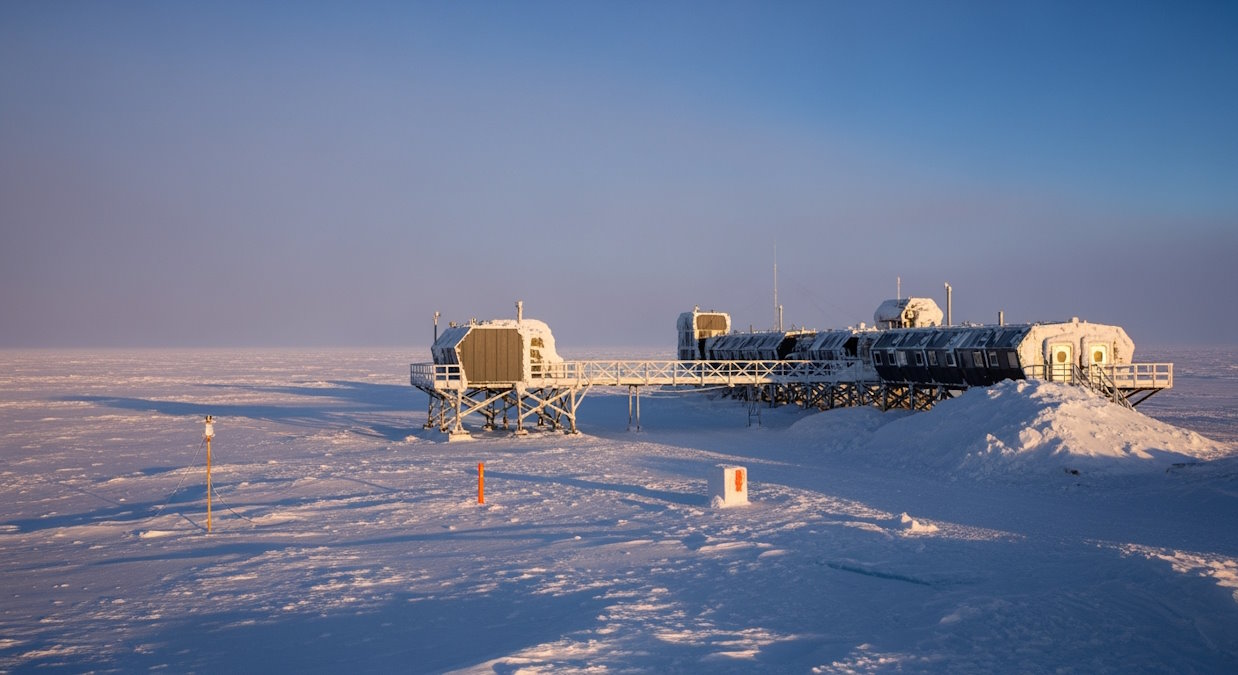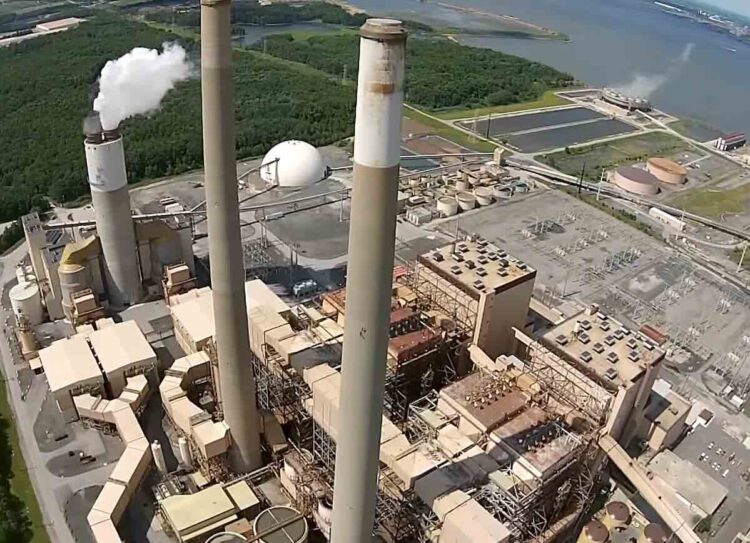
by David Middleton | Jan. 8, 2022
Plunging Natural Gas Supply Shows Texas Still Not Ready for Cold
By Gerson Freitas Jr, Francesca Maglione, and Sergio Chapa
January 3, 2022, 12:06 PM CST Corrected January 6, 2022, 1:18 PM CSTTexas’s natural gas industry had almost a year to prepare for last weekend’s cold blast and avoid another loss of production. But yet again, instruments froze, output plunged and companies spewed a miasma of pollutants into the atmosphere in a bid to keep operations stable.
Though Saturday’s cold front wasn’t as severe as the February storm that killed hundreds and knocked out power to much of the state, nearly 1 million cubic feet of gas was burned or wasted due to weather-related shutdowns, according to filings with the Texas Commission on Environmental Quality. At the same time, production plunged to the lowest level since the last freeze, BloombergNEF data shows.
[…]
The article includes this eye-popping graphic:
The Bloomberg article is…
The freezing weather over New Year’s weekend did lead some operators to shut in production. However, the media intentionally exaggerated the production drop and willfully ignored the actual failure.
EIA Data Suggests 5% Decline in Texas Natural Gas Production – Not 25% As Some Outlets Reported
January 7, 2022
Bloomberg Corrects Gross Exaggeration of Emissions Related to Cold Weather (Corrects 1 Billion cubic feet to 1 Million cubic feet)
AUSTIN – Being quick to blame and slow to listen might get headlines, but it doesn’t deliver facts that are needed to make thoughtful decisions to protect the lives of Texans.
Recent media reports and industry hacks have been exaggerating data about the natural gas system related to the recent cold weather. There are no official daily reports of actual flows of natural gas – they are delivered monthly. However, analysts can offer estimates based on market activity, the same type of activity sellers and buyers of natural gas use to make their daily decisions.
Recent estimates of natural gas production vary, as should be expected because of the assumptions that go into every estimate. They also vary because not every analyst is analyzing the exact same data, areas or timeframes.
Based on just-released data from the U.S. Energy Information Agency (EIA), IHS Markit estimates weekly average natural gas production in the Permian Basin in West Texas and Southeast New Mexico fell by 0.8 Bcf/d (5%) week-over-week. The week-over-week time period analyzed is December 22-29 and December 29-January 5.
RBN Energy issued comments on the storm this past Monday. RBN looked at Permian data that includes both Texas and New Mexico and stated the previous week production levels were near 14 Bcf/d and over the weekend declined to 10.89 Bcf/d, a decline of 3.11 Bcf, representing a reduction of 22%. RBN data attributed the decline to both cold conditions and high winds, which are often a factor of declined production in the Permian, not just during cold days.
Whatever the actual number is for all of Texas when all producing basins are included, the drop in natural gas production is not unique to Texas nor was the Texas production decline anywhere near a major issue for overall gas availability for those who plan ahead and utilize the vast amount of natural gas storage (544 Bcf of working capacity). Otherwise, the market would have reflected a shortage in the spot-pricing, the real test of availability. Important to this conversation and the system is something we have consistently stated since the Uri discussions: some variation in production occurs with sudden temperature changes – these are field operations, not controlled factory settings.
Texas usually produces about 25 Bcf/d of natural gas. Natural gas used for electricity generation is typically only about 4 Bcf/d, meaning 75% of the natural gas produced in Texas goes toward purposes other than electricity generation. This other 75% can be called on by generators if they want to purchase it. For speculation purposes, let’s assume Texas experienced a total reduction during the 3-day cold weather of 20% (much higher than EIA estimates of 5%), that leaves 20 Bcf/d, five times as much gas as is used for electricity generation, plus hundreds of billions of cubic feet of natural gas in storage for those who choose to contract for it and purchase it.
To further confuse what happened during the recent cold weather event, Bloomberg initially reported 1 billion cubic feet (Bcf) of natural gas was emitted during this period, which created even more media hyperbole about the impact of the cold weather. Bloomberg rightly issued a correction that the 1 billion cubic feet was actually 1 million cubic feet – this is a significant error. TCEQ can and will investigate this fully but initial reports confirm this should be within normal operating expectations and the impact is minimal.
Even Bloomberg, with all of its catastrophizing, shows a similar amount of natural gas available as was available a year ago. Thus, no crisis.
[…]
Despite all the caterwauling about Texas and ERCOT being unprepared for winter, natural gas fired electricity generation responded to the freeze as it was designed to do.

Can you guess which energy source failed as temperatures dropped?





